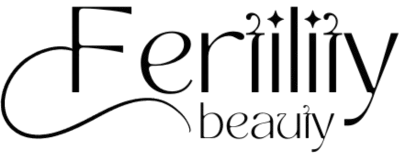Hyaluronic acid (HA) is naturally produced by the body to lubricate joints, eyes, and skin. Its primary function in skincare is to retain moisture, giving the skin a radiant, youthful glow. As a result of its powerful water-attracting capabilities, hyaluronic acid has become a sought-after ingredient in many cosmetic products. But while its role in hydration is well known, research also suggests it may aid in acne treatments.
This article explores how hyaluronic acid can assist in treating acne and offers a comprehensive anti-acne skincare routine.
Table of Contents
Does Hyaluronic Acid Help Treat Acne?
Hyaluronic acid may not directly treat acne, but its hydrating properties can indirectly support acne treatment. Dry skin can trigger excess sebum production, leading to clogged pores and breakouts. Proper hydration, supported by HA, helps maintain the skin’s balance and prevent these issues. By keeping the skin hydrated, hyaluronic acid may help reduce the frequency of acne breakouts.
It’s important to note that hyaluronic acid is not a primary acne treatment. Many individuals with acne use retinoids, benzoyl peroxide, and salicylic acid, which often dry the skin out. HA helps counteract this dryness by restoring moisture and soothing irritation caused by these potent treatments.
Does Hyaluronic Acid Help Treat Acne Scars?
Topical application of hyaluronic acid does not reduce acne scars. However, studies show that HA may improve the results of treatments like laser therapy for scar tissue, though it is not effective on its own.
Hyaluronic acid dermal fillers are commonly used to treat mild atrophic scars. These fillers can smooth and even out depressed scar tissue by injecting HA into the affected area. Patients usually need to repeat the treatment every six to 18 months to maintain the results.
Who Should Use Hyaluronic Acid for Acne?
Hyaluronic acid is a gentle and hydrating ingredient suitable for all skin types, including oily, acne-prone skin. It helps regulate sebum production and clear pores, resulting in a more balanced skin tone. Those undergoing acne treatment that dries the skin may benefit from using HA as a complementary treatment to counteract the drying effects of the medication.
While HA is generally well-tolerated, some individuals may experience breakouts after introducing it into their skincare routine. This is more likely caused by other ingredients in the product, rather than the HA itself. If this happens, it is important to discontinue use and consult a dermatologist to find a more suitable option.
When to Avoid Using Hyaluronic Acid for Acne?
In most cases, hyaluronic acid benefits the skin. However, products that contain HA may also include comedogenic ingredients—substances that clog pores and exacerbate acne. These ingredients can include oils (e.g., avocado, almond, flaxseed), butters (e.g., cocoa, coconut), beeswax, stearic acid, and retinol. If you have oily, acne-prone skin, always check the product label for non-comedogenic formulations.
How to Use Hyaluronic Acid for Acne
Hyaluronic acid can be incorporated into a daily skincare routine. It is found in cleansers, toners, facial masks, serums, and moisturizers. Serums are often recommended for acne-prone skin because they tend to have fewer ingredients, which reduces the risk of irritation. A hyaluronic acid serum should be applied after cleansing and toning but before moisturizing.
HA moisturizers are also popular, but they can include occlusive ingredients that form a barrier on the skin, preventing moisture loss. Unfortunately, these ingredients can also clog pores, so it’s essential to select lightweight, non-comedogenic moisturizers for daily use.
Remember that hyaluronic acid is not a stand-alone treatment for acne but a supplement to a broader skincare regimen. Consult a skincare professional to create a personalized anti-acne strategy.
Skincare Routine with Hyaluronic Acid for Acne-Prone Skin
Here’s an example of a daily skincare routine for individuals with acne-prone skin:
Morning Routine:
- Cleanse the skin with a gentle, non-comedogenic cleanser.
- Apply a thin layer of your acne treatment product and let it absorb.
- Follow with a layer of hyaluronic acid serum.
- If necessary, apply a lightweight, non-comedogenic moisturizer.
- Finish with a broad-spectrum sunscreen.
Evening Routine:
- Cleanse the skin thoroughly to remove makeup, sweat, and impurities.
- Reapply your acne treatment product.
- Use a hyaluronic acid serum followed by a non-comedogenic moisturizer.
Consider using hyaluronic acid masks two to three times a week for an extra hydration boost. Additionally, hyaluronic acid pairs well with niacinamide, a popular ingredient that helps regulate oil production and support the skin barrier. You can safely use this combination both morning and evening for optimal results.
Conclusion
Hyaluronic acid is a highly beneficial ingredient for those with acne-prone skin. By boosting hydration, it helps regulate sebum production and fights inflammation, all while supporting the skin’s barrier function. For the best results, hyaluronic acid should be incorporated into a comprehensive acne treatment plan, ideally devised with the help of a skincare professional.

